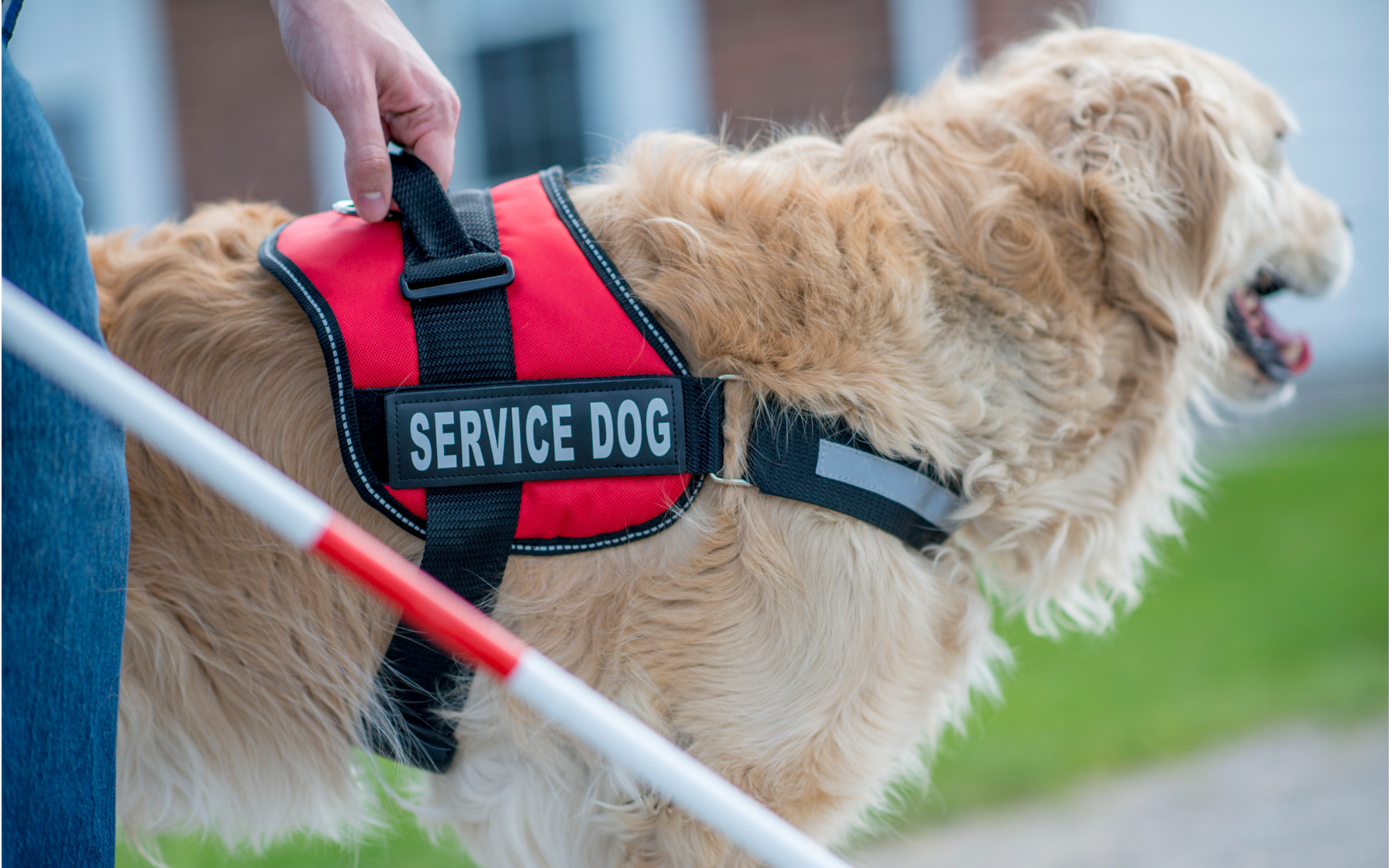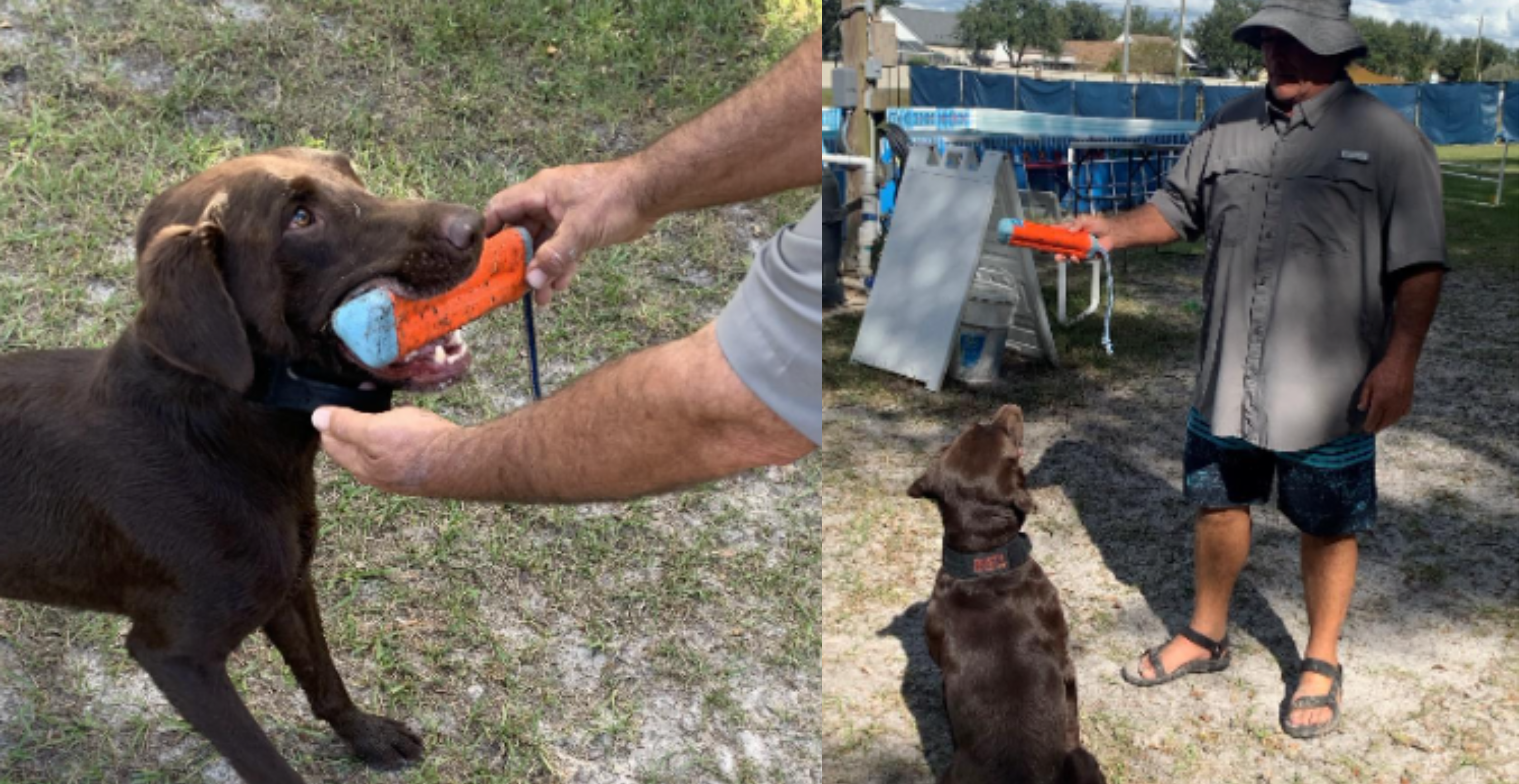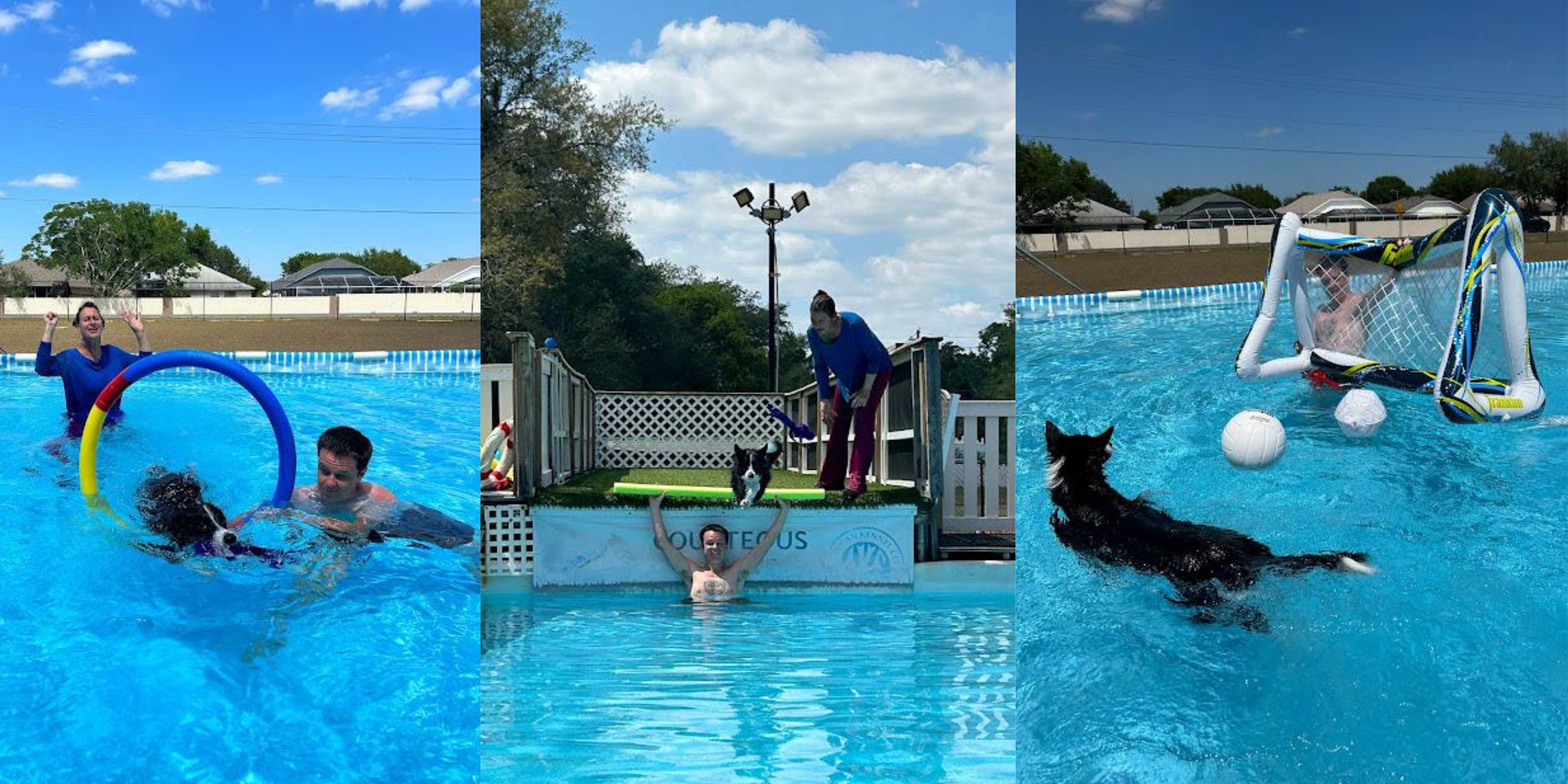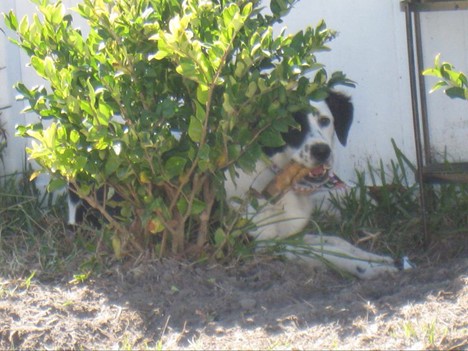By Brenna Fender
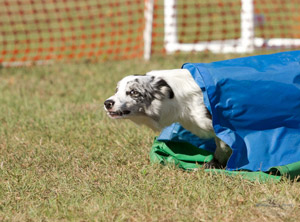
How can you do it?
Jumps are the easiest pieces of equipment to make, and that’s great because you can set up several challenging sequences with just a few of them. For fun and fitness, backyard jumps can be kept low so that they are easy to build and safe for your pet.
In order to make a jump, you just need a “bar” – the thing your dog will jump over, and “standards” – the things the bar rests on. The most important thing is that your jumps be displaceable. That means that the bar needs to be easily knocked down. If your dog is large, a broomstick or other similar item might work, but for small dogs, that may be too heavy to move if bumped. You might need to purchase or borrow a few lightweight PVC pipes to use as jump bars.
Standards can be anything that you can sit the bar on in a way that it can be easily knocked off. For small dogs, or for very low jumps for big dogs, soda cans on their sides and dented in a bit can work. Paint cans, large buckets, flower pots, and similar items can make great jump standards. Chairs work too, but they can be too high and parts of the chair may keep the bar from displacing. If you use chairs, you can use two bars, propping one end of the bar on one chair and the other on the ground. Do the same with the other side to form an X. This will allow your dog to jump lower and to knock the bars down if necessary.
Other kinds of jumps can be made out of a stack of cardboard boxes. Those kinds of jumps can be made with a little “width” to them to simulate double jumps or wall jumps.
Hula hoops and irrigation piping fixed into a circle make nice “tires” to jump through. A ladder on the ground makes a great training obstacle to teach dogs to understand where their hind feet are. A large cardboard box with the ends open can make a beginner tunnel. Encourage your dog to push through a towel or sheet to simulate a chute. Use your bed or sofa to practice sending to the table, and to practice downs and sits on the table. Use cones, or even trees, to send your dog around.
Test out your homemade equipment carefully to make sure that your dog will be safe when using it. And then have fun doing some homemade agility!

